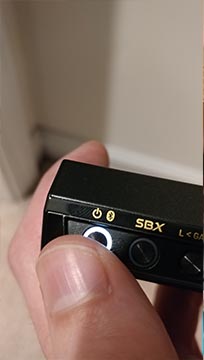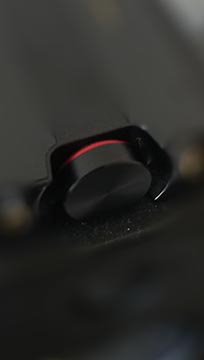A DESIGN I LOVE
A new Keurig coffee maker is my choice for a design I love. Not only does my new coffee maker provide a delicious beverage full of much needed caffeine, It also has well designed features for ease of use. There are numerous affordances that give the user clues on how to operate it, even if it is their first Keurig. There are both visual and auditory feedback, letting the user know that the machine is working and what stage of the coffee making process the user is in. There are also natural mappings and constraints that make for a pleasant experience.

Affordances such as the shape of the lever, on the front of the machine, and the protrusions on the water tank lid indicate to the user that these are movable parts. Each affords lifting. Once, you open the lid to the machine, there is spot for the K-pod.

A physical constraint prevents the K-Cup (a plastic cup filled with coffee) from being placed in the machine the wrong way. When you lower the lid, tactile feedback indicates that the pod is being opened. A visual indicator gives feedback to let you know that you can now brew a cup of coffee.
The water tank has a direct natural mapping to the amount of coffee your machine will make for you. What you pour in, is how much coffee you get out. When you push the giant K button on the machine, it immediately gives you feedback that the process has begun. The water tank empties, and the indicator light pulses to let you know things are working as intended.
There is a platform that affords holding objects, and your mug fits perfectly on this spot. The brewing process ends with auditory feedback of the machine pouring hot delicious coffee into your cup.
A DESIGN I HATE
A design I hate is my Creative E5 24 bit DAC (Digital to Analogue Converter). This little black device is loaded with top of the line features and specs that would satisfy the desires of most audiophiles. However, there is no way for me to enjoy these features because of two major flaws with how the designers built the hardware. The flaws are directly related to how it gives you feedback.

The device is battery powered and marketed as a way to take your audiophile needs on the go. This basically allows you to use high end headphones with your smartphone or laptop. You stream your music to the DAC via Bluetooth or plug it in directly via USB. The device converts the digital signal into an analogue signal that your headphones can understand. To control the E5, there are buttons as well as lights on the side. These lights are supposedly there to give you visual feedback and let you know when it is on, charging, and in Bluetooth pairing mode.

The power button toggles the E5 on and also serves as a way to activate the Bluetooth pairing mode. From the start there are problems. Push the power button for a couple of seconds, the E5 turns on. There is a small amount of tactile feedback as the button pushes in. Hold it for a few more seconds, you switch it into Bluetooth pairing mode. Hold the button even longer and it turns off again. This is a convoluted design as the mode that you are in depends on how long you hold the button. There is poor visual feedback, which fails to let you know what mode you have entered. This visual feedback, which is a different color of light, is insufficient because it is covered by your finger when you press the button. The buttons are smaller than even a child’s finger. Awkwardly, you will try to push the button without covering the light. What’s more, because there is only a small moment of time between switching modes, you will often have to try multiple times to get the device either to enter the correct mode, often overshooting into the one after. Additionally, I don’t understand having a timing element to switching between modes. I have many ideas on how to improve this design, but we need to move things along.
Once you have powered the E5 on and get it connected you will run into even more feedback problems. There is a volume knob on the front of the DAC to allow you to control the volume. However, there is no physical constraints on

the knob, allowing endless scrolling. There is also no feedback (visual or otherwise) to indicate what volume the device is currently set to. Pair this with the fact that you are intended to use this with multiple devices, means that the volume can easily be switched to different levels depending on the source of the audio. Initially, I would accidentally blast my ears with music on near maximum volume because of this problem. Not only could this potentially damage your ears or headphones, but is an overall unpleasant experience. This expensive little device now sits on my desk as a paper weight. Poor design inhibits its most basic functions and eliminates the possibility for a good experience.

Thank you for your detailed post, Joe! If only product reviews online were like this. Now I brew my coffee with a different non-electric apparatus but your post has me sold on the KCM if I ever consider brewing coffee any other way.
Back on a serious note, your post about the converter device you dislike for good reasons also highlights an important problem we are faced with today – marketing strategies aim to address what most of us look for with electronic devices and gadgets (convenience, portability) but poorly designed products become a source for user grievance and significant electronic wastage :-(. Like you, I can definitely recall owning a couple of products in the past that whether expensive or not, quickly made their way to being a useless product and eventually in the e-trash.